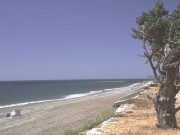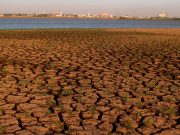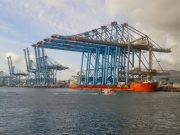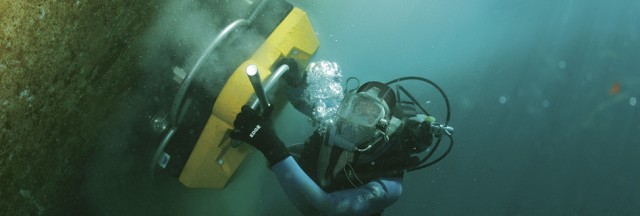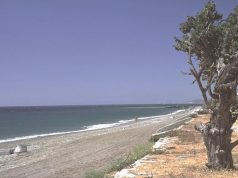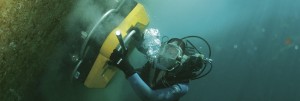
A BANNED process to scrub ship hulls to increase speed is adding toxic cocktails to the waters off Gibraltar, threatening sensitive marine life.
The procedure – which is banned in most European ports – involves the mechanical scrubbing of the hulls to remove fouling and increase the vessel’s speed.
Research shows that more than a ton of toxic anti-fouling paint is removed during cleaning.
This toxic material – including heavy metals and herbicides banned for use on land – is released into the water threatening marine life.
‘Fouling’, the growth of marine slime, weeds and barnacles on hulls, can increase fuel bills for ship-owners by as much as 20% – or as much as € 20,000 more per day.
Cleaning should be confined to dry docks, where toxic waste can be carefully disposed of, but Gibraltar and Algeciras are among a very small number of European ports where it can be done in the water.
An estimated four large ships are cleaned every day by diving companies operating out of the two ports.
Scrubbing a large hull removes up to two tons of anti-fouling paint, of which about half is made up of toxic biocides.
Anti-fouling paints usually contain more than 30% of copper compounds, and in some cases up to 10% of powerful herbicides such as Diuron.
These compounds persist for long periods in the sediment of the bay.
Figures for the levels of copper, zinc and Diuron are supposed to be monitored under EU Directives, but figures for the bay area are not currently available.
Marine ecologists are concerned about the effects of the pollutants. Besides copper and zinc, ‘boosters’ included in anti-fouling paint make it even more toxic.
Marine ecologist Dr Simon Bray, said:: “Heavy metals such as copper and zinc from ship anti-fouling coatings can accumulate to toxic levels in fine sediment.
“Research has shown that there can be long term “reservoirs” of such material which can be released through physical disturbance such as dredging.
“Sensitive species and communities may be affected.”






